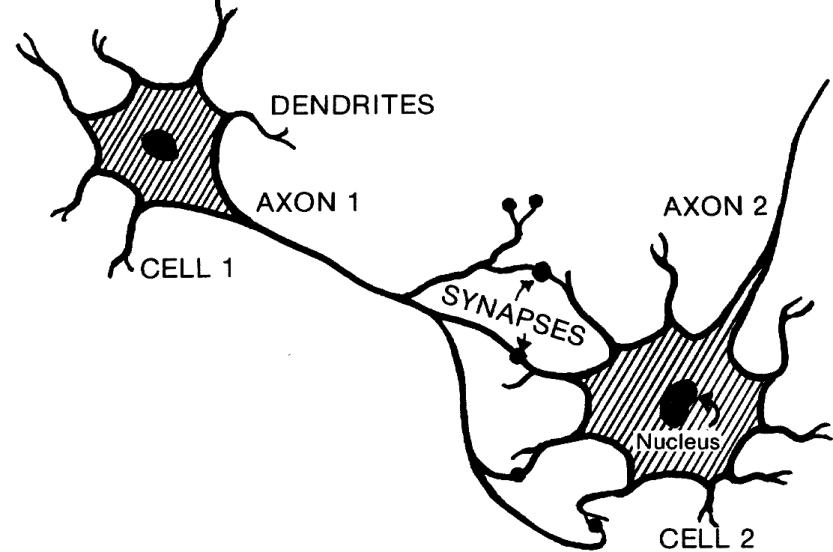Introduction
Whether considering a star or a starfish, design remains one of the strongest evidences in support of Creation. Opponents never have known how to deal with the compelling design and plan observed in all parts of nature.1 Meanwhile, science accumulates new examples of design every day. Scripture adds its approval, declaring that there is no excuse for missing the implications of creative design (Romans 1:20).
But there is one particular aspect of design which is so powerful, so convincing, that it almost seems unfair to challenge evolution with it. The reference is to our brain, the greatest concentration of chemo-neurological order and complexity in the physical universe. It is a video camera and library, a computer and communication center, all in one. And the more the brain is used the better it becomes! A detailed picture of the human brain is slowly emerging, the origin of which seems entirely beyond comprehension from a naturalistic point of view. We see remarkable purpose and interdependence within the brain—every part works for the benefit of the whole. Such features are not totally understood; the brain is unable fully to understand itself. As always, we cannot fully understand the created, intricate details of the present-day world.
Description of the Brain
The adult brain weighs about 1350 grams, just three pounds, yet it handles the information of 1000 supercomputers. The fundamental unit within the brain is the neuron, or nerve cell. Each cell, about 10-6 meter in diameter, contains a nucleus and branching fibers called dendrites and axons. When a cell "fires," it sends electrochemical impulses along its axon extension to neighboring neurons. These signals, or brain-wave patterns, are in the range of microvolts. Figure 1 shows two neurons with dendrite-axon contacts called synapses. Our brain contains about 10 billion neurons (1010). During the first nine months of life, these neurons form at the astounding rate of 25,000 per minute.
Dendrites
 |
Each neuron is in dendritic contact with perhaps 10,000 other neurons. The total number of neurological interconnections is on the order of 1014(100 trillion). This number is equivalent to all the leaves on all the trees of a vast forest covering half of the U.S. The total length of the nerve dendrites in an adult brain is over 100,000 miles!2 At any given moment the many dendrite connections can be visualized as light switches that are either on (firing) or off, controlled by a chemical transmitter. Thus the brain holds at least 1014 bits (binary digits) of information. Actually, it is a much greater number, since the neurons also show intermediate firing states, somewhat like a light-dimmer switch. Consequently, the brain shows both digital and analog characteristics. At any given moment, perhaps 10% of the brain cells are firing, at a frequency of about 100 hertz. This implies a rate of 1015signals or computations every second. For comparison, the Cray-2 supercomputer's speed is 109 computations per second, with a storage capacity of 1011 bits. Thus, the storage capacity of this supercomputer is 1,000 times less than that of the human brain. Table I shows the memory capacity of several systems. Note that the potential brain capacity is estimated as at least equivalent to that of 25 million volumes, a 500-mile-long bookshelf! Clearly, the brain is far more advanced than any computer ever produced. This computer analogy should not be carried too far, however, because brain organization is unlike anything else encountered in technology or nature.3
Computer designers have attempted to mimic brain structure with "neural networks," a type of artificial intelligence (AI). Success has been very limited; one leader has concluded that some facets of our thinking will never be duplicated by a machine.4
| Storage Device | Information capacity (words) |
| 1 typed page | 300 |
| 3.5" double density compact disk (CD) | 40-200 million |
| Library of Congress - 20 million volumes | 2 trillion |
| Brain - 25 million volumes | 2.5 trillion |
Evolutionary Explanations
A.R. Wallace was a natural historian and an acquaintance of Charles Darwin. In an exchange of letters in 1869, Wallace wrote, "Natural selection could only have endowed the savage with a brain a little superior to that of the ape whereas he possesses one very little inferior to that of an average member of our learned society." Darwin realized the threat of this statement to evolution, and replied, "I hope you have not murdered completely your own and my child."5 Darwin feared the death of his evolution theory because the human brain far exceeded his view of early man. Why did the brain evolve with potential which never has been utilized to its fullest extent? This "murdered child" threat greatly troubled Darwin in his later years.6 Perplexed by what he observed, Darwin described the brain of even the lowly ant as the most remarkable speck of matter in the world.7
How does modern secular science explain the assumed "explosive development" of the human brain? Very creatively! One traditional idea is that man's discovery of complex tools and speech led to higher thinking and increased brain size. However, this explanation is a tautology: Which came first, the increased thinking ability or increased brain capacity? Today there are new ideas emerging for man's intelligence, some of them quite humorous. For example, consider the suggestion that early man had his brain "baked" and damaged by spending too much time in the hot sun.8 The brain compensated by evolving additional neuron connections to make up for the deficit. When our ancestor finally came in from the sun (or perhaps put on a hat!) his full brain began to function once again!
The Two Brains
One active area of research involves the separate functions of the brain's left and right hemispheres. These mirror-image halves are joined together by a massive bundle of perhaps twenty million nerve fibers called the corpus callosum. The left side of the body is mainly controlled by the right hemisphere, and vice versa. The left hemisphere is found to be specialized for language and analytical problem-solving. The right hemisphere, in contrast, controls visual and artistic ideas.
A standard secular explanation of this brain division is that the two hemispheres evolved to provide backup systems for each other in the event of injury to one side.9 One might ask, however, why there is just one division of the brain, when four or six backup parts would provide even greater survival value. And if the two halves indeed evolved as backups for each other, then why are they specialized for different activities? The arbitrary and conflicting ideas of brain evolution are obvious. Much evolutionary thinking appears to be the result of dominant right hemisphere activity, where creativity reigns, and the neglect of the left hemisphere, where logical reasoning occurs!
Conclusion
The beautiful complexity of our brain contrasts sharply with all simplistic, secular attempts to explain it away. Our brain remains a frontier of science; we actually know very little about it, but what is known is overwhelming. In addition, every single neuronal cell within the brain contains a trillion atoms. This is like a microscopic universe within each cell, complete with order, purpose, and interdependence of components.
Many topics related to the brain remain for the creationist to explore: What could our first parents, Adam and Eve, have accomplished with the possible full use of their brain potential, before the limitations of the curse? What damage has been done to science by the false revolutionary idea that brain size is the sole measure of intelligence?10
The brain truly provides an ultimate design challenge for evolution. It should be a cause for humble praise in considering the wonder of the mind. It is a privilege to dedicate these minds to the Creator.
References
1. R. Dawkins, The Blind Watchmaker, Longmans Group, Harlow, Essex England. 1986, p. 5.
2. M. Denton, Evolution: A Theory in Crisis, Adler and Adler, Bethesda, Maryland, 1985 p. 330.
3. D. Meredith, Metamagical Themes, Basic Books, N.Y., 1985.
4. R. Penrose, The Emperor's New Mind, Oxford University Press, New York, 1989.
5. R.M. Restak, The Brain the Last Frontier, Doubleday and Company, Inc., Garden City, New York, 1979, pp. 58,59.
6. Ibid., p. 67.
7. C.U.M. Smith, The Brain, G.P. Putnam's Sons, New York, 1970, p. 195.
8. K.R. Fialkowsky, "A mechanism for the origin of the human brain: a hypothesis," Current Anthropology 27(6):288, June 1986. See also "A half-baked theory of how our brains grew?", Discover 7(9):15, September 1986.
9. R.M. Restak, The Brain, Bantam Books, New York, 1984, p 240.
10. H.B. Sarnat and M.G. Netsky, Evolution of the Nervous System, Oxford University Press, New York, 1981, p. 398.
*Don B. DeYoung, Ph.D., is a Professor of Physics at Grace College, Winona Lake, Indiana; Richard B. Bliss, Ed.D., is the Former Director of Curriculum Development at ICR.






